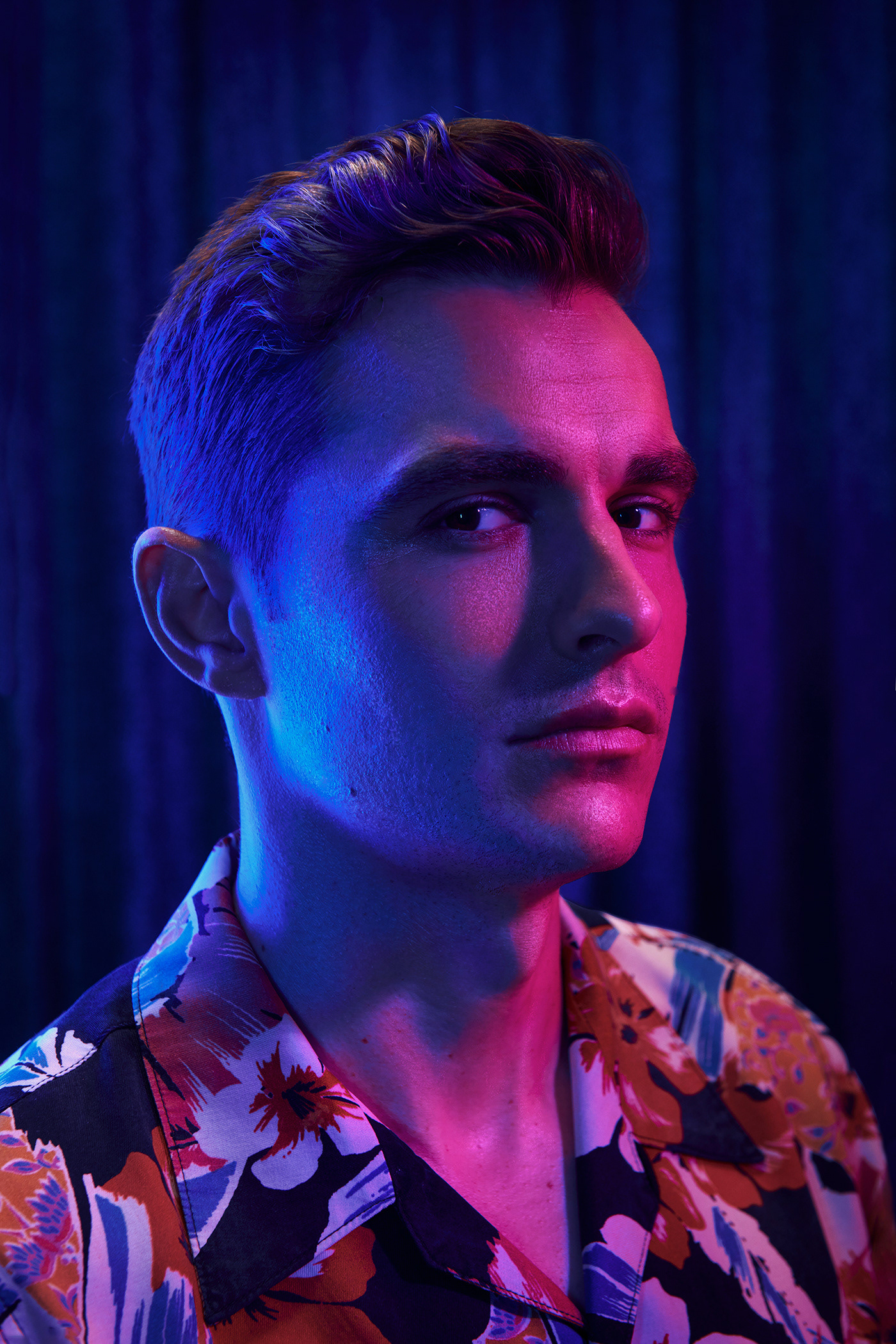CELL
PROJECT TYPE : Product, Service
DATE : 2014. 9 ~ 12
STUDIO : Professor Eui-Chul, Jung
SIZE : 250x250x250(h)mm
Concept
The project, inspired by the evolutionary process of organisms, was held at the 2014 product design graduation degree show and establishes a service related to product. This product is a surface of lighting, but rather than simply reproducing the format of ‘lighting’, focuses on the process of design. One of the most important role for temporary designers is to create something aesthetic, economical and practical. In this process, neither the opinion of consumers nor detailed needs of the individuals can be reflected to a product. Only the designer has the absolute authority to decide the whole process of production from concept and shape to method in such a system. As the age changes, public needs and how people pursue beauty have varied. Therefore, the massive production of the previous era no longer suits modern society and is undoubtedly a critical inhibition for development of the field of design. Recognizing the problem of this process was the starting point of this project. ‘Participation of the consumers in the design process’ was one the problems that this project has to solve.. Since the public have limited knowledge of production process and creating aesthetic beauty compared to professional designers, I could not assign every authority to them. Therefore, it was important to let the clients be active, but within some bounds like algorithms that the designer sets. To summarize this project, the designer sets up an environment where clients can experience the design process, and rule for the environment. The rule for the space resembles the process of cell division. A cell systematically grows depending on the DNA. Within the bounds of command that DNA orders, each cell varies into multiflex forms and grows with a special essence. Although the product is an artifact but the biological principle lies in the process of creation. The project ‘CELL’ is based on these ideas.

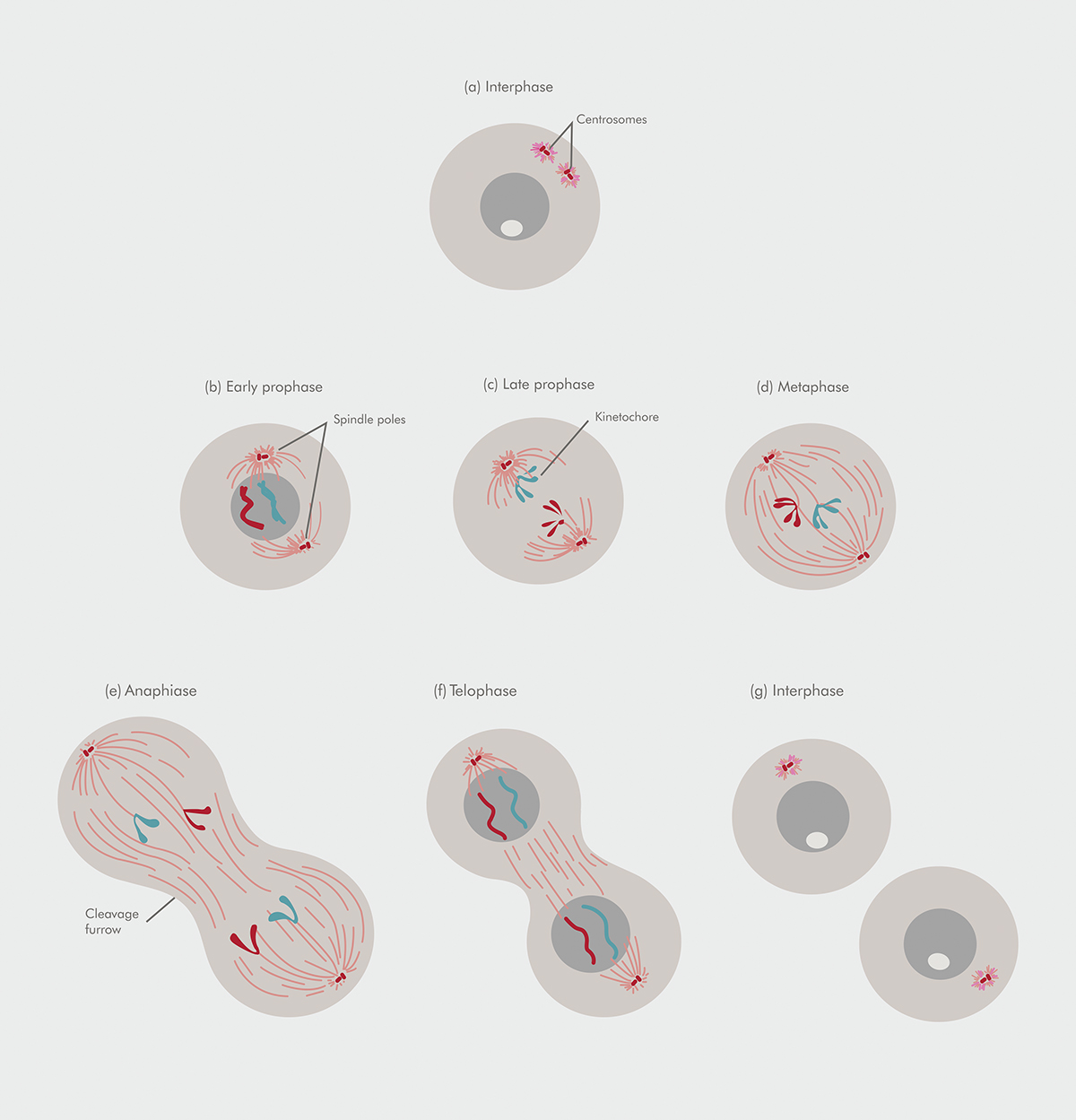
Growth phase of cell
Nature has evolved ever since its creation. It has gave us each individuals an ability to survive. Many theories exist behind this solutions in the ecosystem. There are 4 conditions for those living things that evolves. First, each individuals show different forms and behaviors.
Thus, all the living things in this nature have different types of variations among individuals. Second, descendent usually resemble their parents. Heridity can be seen during modification. Thirdly, individuals are born in a situation where the environment can’t support the whole comunity, therefore these individuals compete each other for their own benefits.(natural selection theory) Lastly, those individuals who has an abilty to adapt in the evironment quickly has more possibility in surving than those who doesnt, and they will give more birth. This research is focused on the process of cells’ growth which takes smallest part of the overall ecosystem.
I was inspired in sometic cell division process. Sometic cell division doesnt lose their chromosome and genetic information and genes in repetitive process of division. Cells maintain their chracteristics and forms while their size change during the process of cell division.
Thus, all the living things in this nature have different types of variations among individuals. Second, descendent usually resemble their parents. Heridity can be seen during modification. Thirdly, individuals are born in a situation where the environment can’t support the whole comunity, therefore these individuals compete each other for their own benefits.(natural selection theory) Lastly, those individuals who has an abilty to adapt in the evironment quickly has more possibility in surving than those who doesnt, and they will give more birth. This research is focused on the process of cells’ growth which takes smallest part of the overall ecosystem.
I was inspired in sometic cell division process. Sometic cell division doesnt lose their chromosome and genetic information and genes in repetitive process of division. Cells maintain their chracteristics and forms while their size change during the process of cell division.

Concept drawing
(Variation of Cells)
(Variation of Cells)
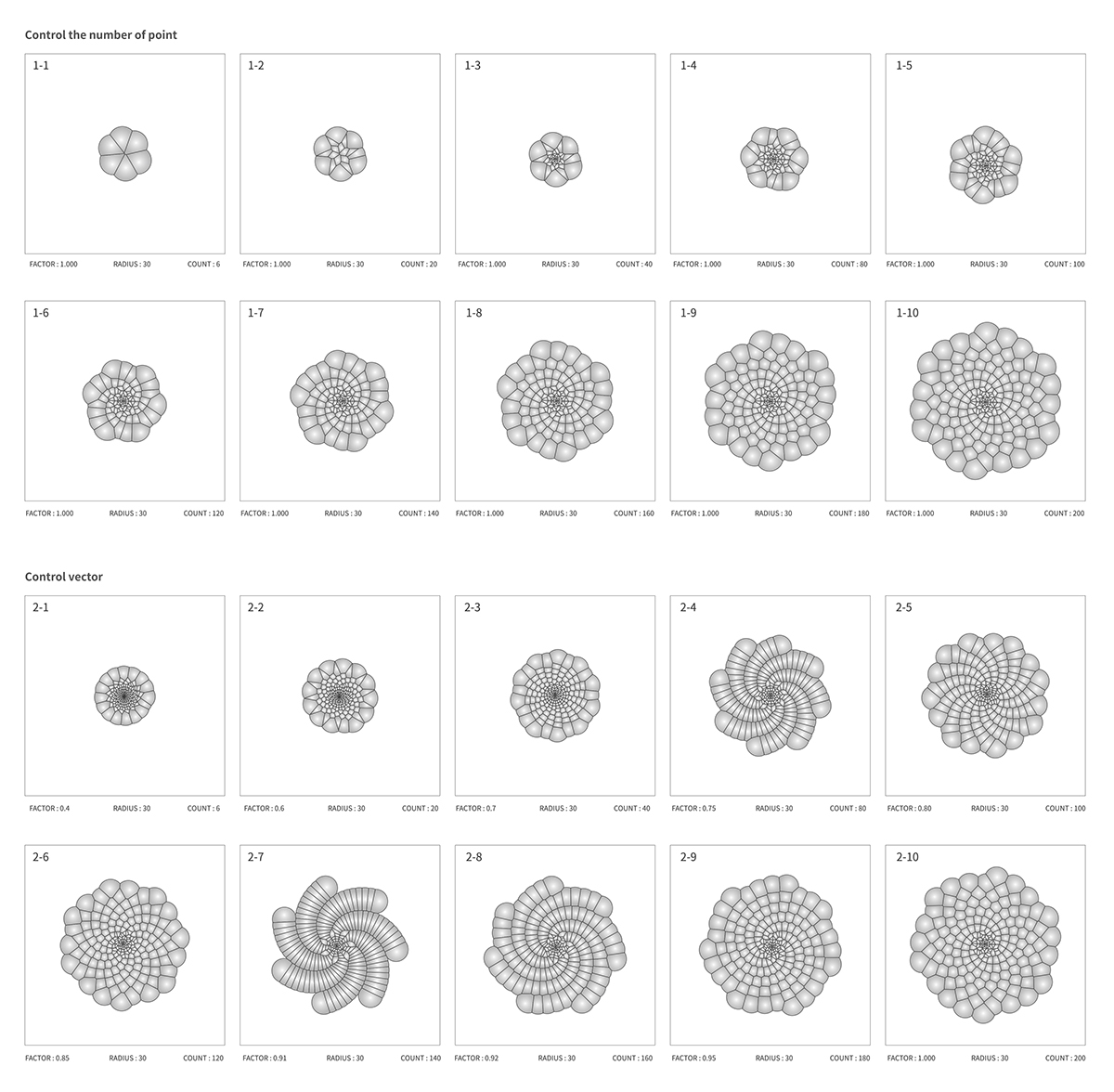
Fragmentation found in nature
There lies numerous mathematical principles in various evolutionary forms of the nature. The mathematical principles generate repetitive and geometric patterns. One of the most representative pattern is the Voronoi pattern, which can be easily found in bubble, leaf, raptile carapace or insect wings. The following is a explanation of the Voronoi principle.
“Assuming that initially assigned dots as ‘generating point’ which generates Voronoi diagram, the distance between an arbitrary point within the polygon and the generation point containing the polygon should be closer to the generation point outside the polygon”.
In other words, a face is split based on each polygon compete for survival and disappears when taken from this competition. The vacancy is filled with other polygons, eventually constructing a structurally sound organism. This pattern is also found in cluster of cells. A plant cell has a nucleus in the center, and the nucleus is surrounded by polygonal cell walls. The cell walls stabilize the entire structure by regulating each other. This kind of separation of space resembles the Voronoi diagram. Innumerable repetition of evolution and growth as a whole generates a sound structure by order and rules.
“Assuming that initially assigned dots as ‘generating point’ which generates Voronoi diagram, the distance between an arbitrary point within the polygon and the generation point containing the polygon should be closer to the generation point outside the polygon”.
In other words, a face is split based on each polygon compete for survival and disappears when taken from this competition. The vacancy is filled with other polygons, eventually constructing a structurally sound organism. This pattern is also found in cluster of cells. A plant cell has a nucleus in the center, and the nucleus is surrounded by polygonal cell walls. The cell walls stabilize the entire structure by regulating each other. This kind of separation of space resembles the Voronoi diagram. Innumerable repetition of evolution and growth as a whole generates a sound structure by order and rules.
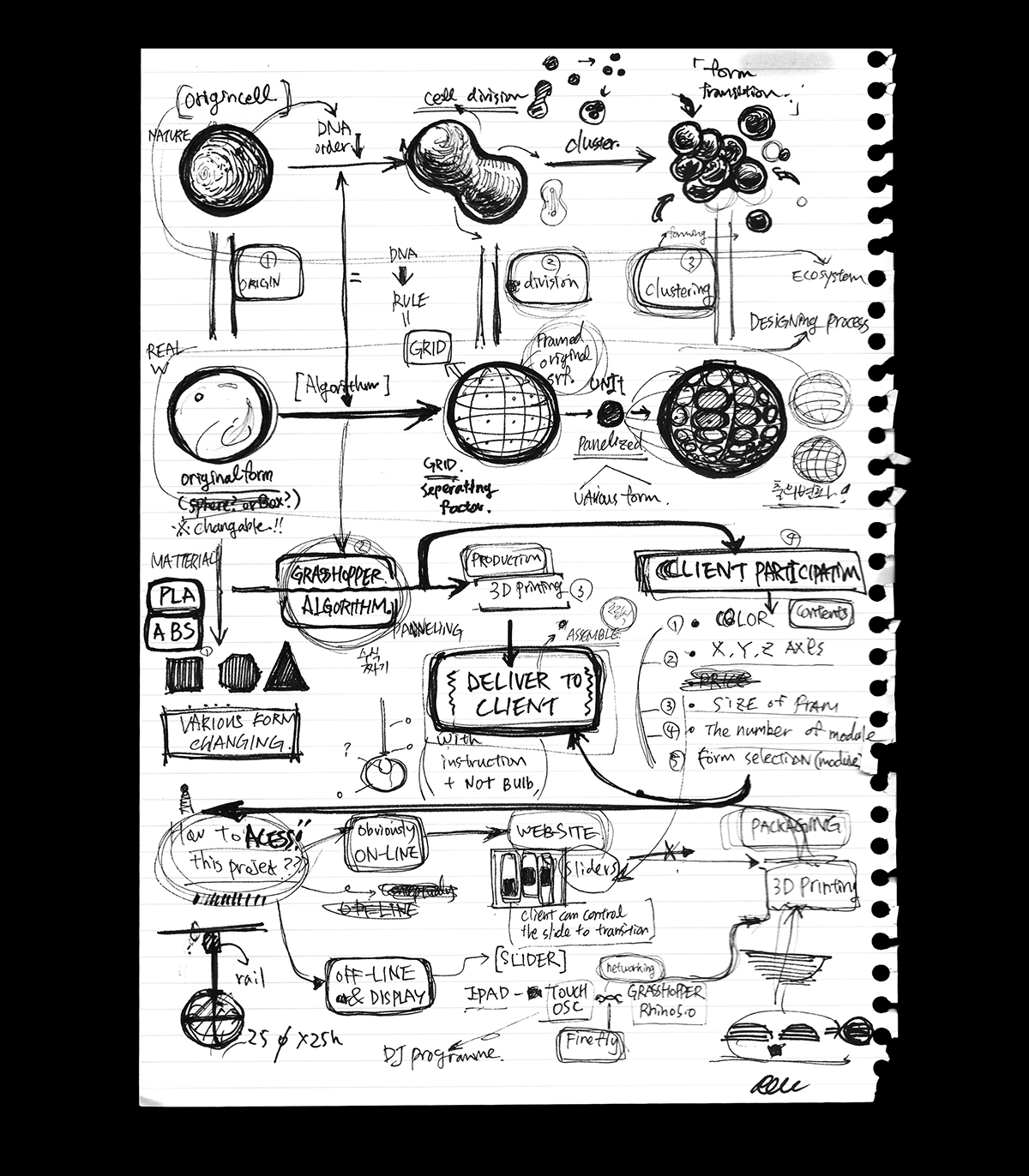
Principles of cell division applied to design process
This project applies the cell division process of designing. I made an algorithm to generate a repetitive pattern similar to the Voronoi diagram. First of all, mother surface which corresponds to the mother cell in cell division must be set. After that, grid system is set to decide the area to be divided and its size. Finally each divided area is reshaped according to a mathematical equation. Diagram above is a variation study about the second process which divides the mother surface with grid system. Since this part is difficult for the consumer to access, the designer is in charge of implementing it. The consumers can participate by modulating rest of the variables such as height, width, color and the number of modules in the bounds of designer-set algorithm. These variables are limited to a producible scope. The algorithm is made with Rhinoceros Grasshopper.
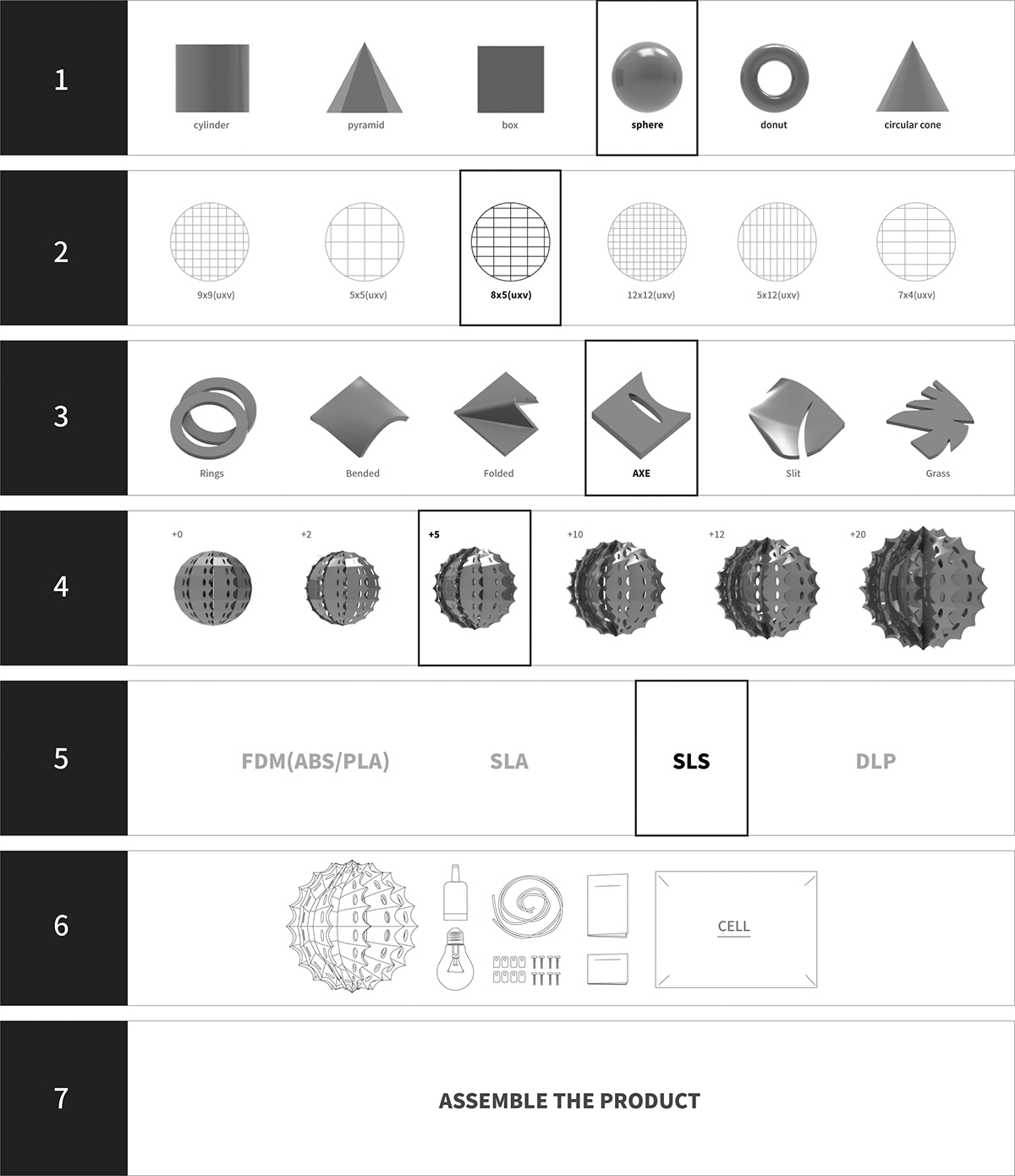
Process of creating product “CELL”
1. The user selects basic polysurface for lighting
2. Set the number of grid (U, V value)
3. After generating the grid, select the module to be applied to the grid among options
4. Adjust the module applied to grid through number slider (Color, Vector)
5. When the user complete the decision of the design, production goes into progress with 3d printing machine
6. The designer packages the lighting parts and sends it to the client.
7. The user assemble the parts to complete the lighting.
2. Set the number of grid (U, V value)
3. After generating the grid, select the module to be applied to the grid among options
4. Adjust the module applied to grid through number slider (Color, Vector)
5. When the user complete the decision of the design, production goes into progress with 3d printing machine
6. The designer packages the lighting parts and sends it to the client.
7. The user assemble the parts to complete the lighting.
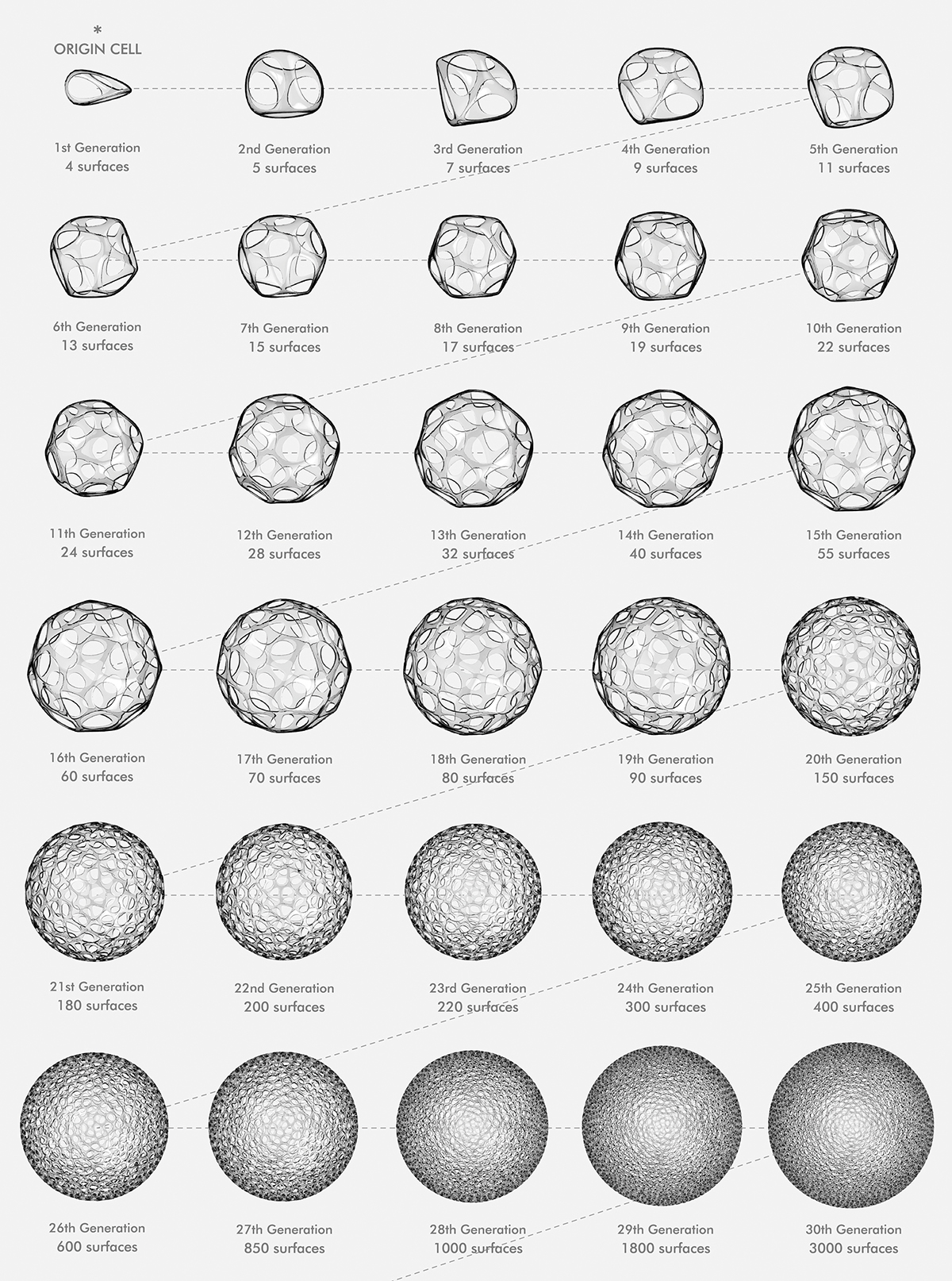
Diagram
(Process - Variation of Product “CELL”)
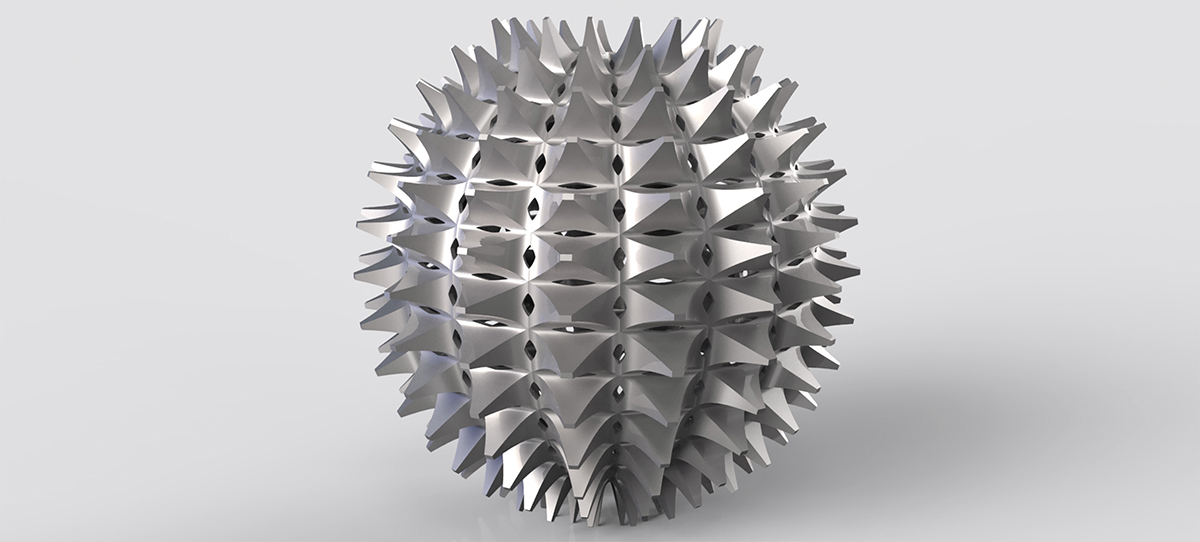


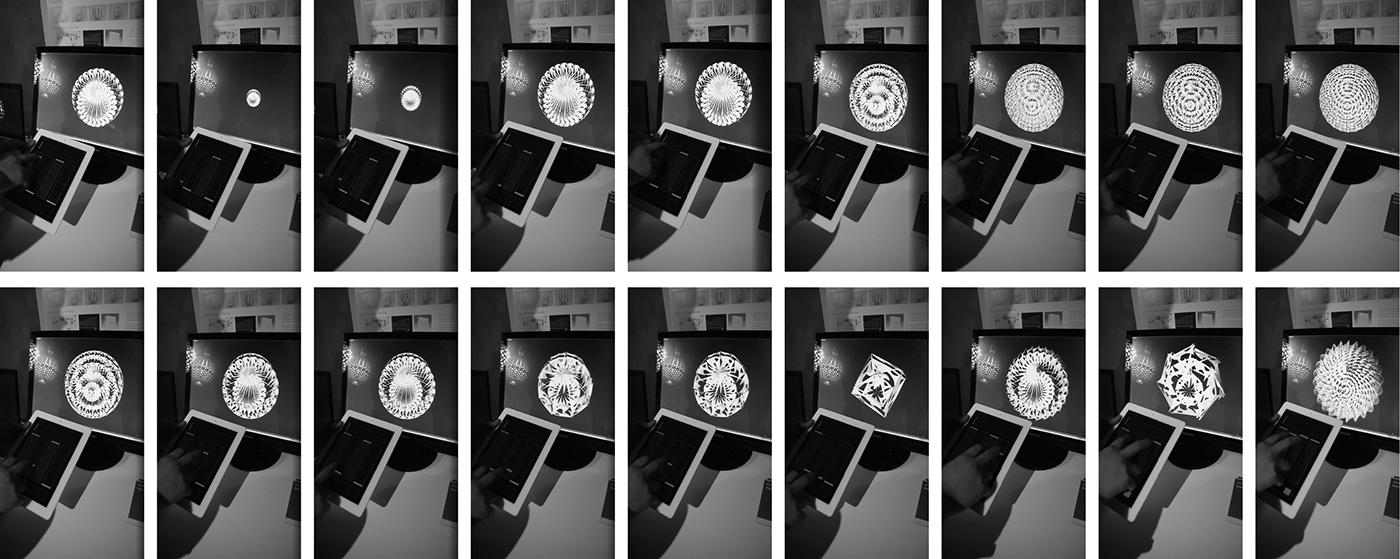
Devices for realizing algorithm
The algorithm was made by using Grasshopper, a plugin for Rhinoceros. A DJing programme, Touch OSC was also used for users to easily manipulate the numeric value with sliders. This application provides both slider and toggle and may be installed on a mobile electronic device, connected with PC through wi-fi. And finally, the algorithm of Grasshopper and Touch OSC was connected with a plugin Firefly. With these series of connection of plugins, user can easily design and manipulate 3D model of Rhinoceros remotely with a slider and a toggle button on their mobile device. I've used the technology described above During the 2015 graduation degree show, but ultimately I wanted realize this system through the internet website. Then it would have been possible for users to design not only the lamp shade which I made in this project, but many other sort of products in various formats.


Contact
Yoo, Jaehyeong
Seoul National University
BA, College of design, Industrial design
------
soulyooza@gmail.com
instagram.com/yooza_yooza
+82 10-5771-5623
